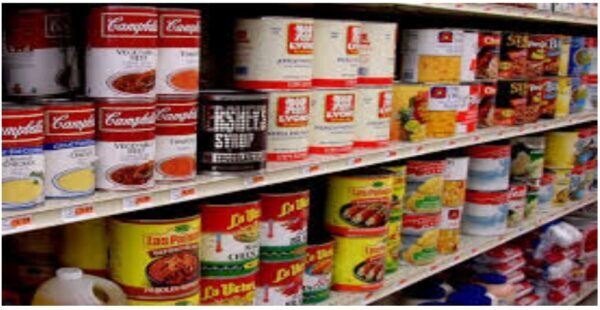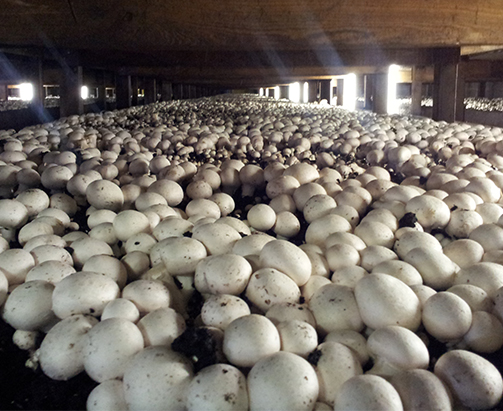How To Do Soybean Production and Export
One of the crops in which Nigeria has comparative advantage and one that will remain profitable for a long time is soybeans also knows as soya beans. A small farmstead cannot go wrong growing this plant. A soybean is viable because it has good prospects as an export commodity and finds application in many food forms. Soybean export started in Nigeria in 1947. It was cultivated for export with the support and encouragement of the groundnut board but production declined in the ’60s. It is also an industrial raw material, especially for the production of soy oil. At the end of harvest, its dry stalks are good fodder for livestock.
Recent advances in soybean research and development has seen the development of many varieties suitable for cultivation in different ecological zones in Nigeria.
In these difficult times, soy milk is one valuable product that can be derived from soybeans cultivation. The cake is an excellent complement to other cereals like maize in the preparation of infant cereals. So, an upcoming soybean farmer can manually produce these foods in small quantities for sale to raise money for personal income and to continue to invest in the farm.
One of the most profitable areas to which soybean cropping can be deployed is in the supply of the beans to animal feed manufacturing companies. Soybean is so nutritious that there is hardly any formulation for animal feed in the country that does not include soybean cake. It, therefore, goes without saying that soybeans is in demand by the local industry.
Soybean is a species of legume, widely grown for its edible bean which has numerous uses. The plant is classed as an oilseed rather than a pulse.
Nigeria is the largest producer of soy in sub-Saharan Africa (SSA).
Sourcing
Soya bean is mostly produced in the middle belt with Benue state accounting for the highest production in Nigeria.
The major producing states in Nigeria include; Benue, Kaduna, Kebbi, Nassarawa, Kogi.
Other states include;Adamawa, Abia, Enugu, Anambra, Jigawa, Lagos, Plateau, Ekiti and the Federal Capital Territory.
Production Figure
Nigeria presently produces about 500,000 MT of the crop annually.
Planting Season
The recommended dates for planting in different ecological zones in Nigeria are: southern region could start planting by early June or early July while northern Nigeria starts in mid-June or early July.
Uses
Apart from making oil and animal feeds, large quantities of soya beans are consumed by many households producing soya milk and cake called ‘awara’ in the North.
A by-product from the oil production (soybean cake) is used as a high-protein animal feed. Soybean also improves soil fertility by adding nitrogen from the atmosphere.
This is a major benefit in African farming systems, where soils have become exhausted by the need to produce more food for increasing populations, and where fertilizers are hardly available and are expensive for farmers.
The price of soybean varies with location, but the average price of a ton of soybean is between N160,000 – N200,000.
During processing, the soybean are cracked to remove the hull and then rolled into full-fat flakes. The rolling process disrupts the oil cells, facilitating solvent extraction of the oil. After the oil has been extracted, the solvent is removed, and the flakes are dried, creating defatted soy flakes.
While most of the defatted soy flakes are further processed into soybean meal for animal feeding, the flakes can be ground to produce soy flour, sized to produce soy grits or texturized to produce textured vegetable protein (TVP) for food uses. Further processing can produce high protein food ingredients such as soy protein concentrates and isolated soy protein.
These ingredients have functional and nutritional applications in various types of bakery, dairy and meat products, infant formulas and the so-called new generation soy foods. Due to this difference in soybean use, two different types of soybeans have emerged: food beans and oil beans
Soybean are generally packed in bags made of either jute, cotton fibers, or plastic. The type of bag determines the height of the stacks.
Generally, the bags are stacked on wooden platforms called pallets, in order to prevent direct contact of bags with the floor.
The free space between the top layer of the stacks and the top of the storehouse should be at least 1 meter. Sometimes, small-farmers keep small quantities of soybeans in sealed containers for self-consumption.
Storage
Soy are stored in a manner to be readily available and of high quality. The main objectives of soybean storage are to permit deferred soybean use, to ensure seed availability for the next crop cycle, to guarantee regular and continuous supplies of raw soybeans for processing industries and to balance the supply and demand of soybean, thereby stabilizing its market price.
Harvesting
Depending on the variety, soybeans can be harvested between 100 and 150 days after planting. Labor Requirements Are High Since Most Cultivation And Harvesting Are Done Manually.
Prospect
Soybean is fast becoming one of the most profitable crops to invest on, in Nigeria. This is largely due to the high demand and use of soybean in the livestock feed industry in Nigeria. Also with soybean being a key raw material for industrial production of oil and other food ingredients, prospect remains high and it is a commodity to watch out for.
Challenges In Production
Problems include pod shattering that reduces seed longevity, and production and distribution difficulties. Dual-purpose improved varieties of soy have not reached many soybean growers to increase production.
Investment Summary In Soya Beans.
To invest in the Soy value chain Nigeria; you can explore investing in one of the following;
– Farming (Production); Processing; Trading and Marketing, Storage; Production of storage bags for Soy and Export of soybean cake.







